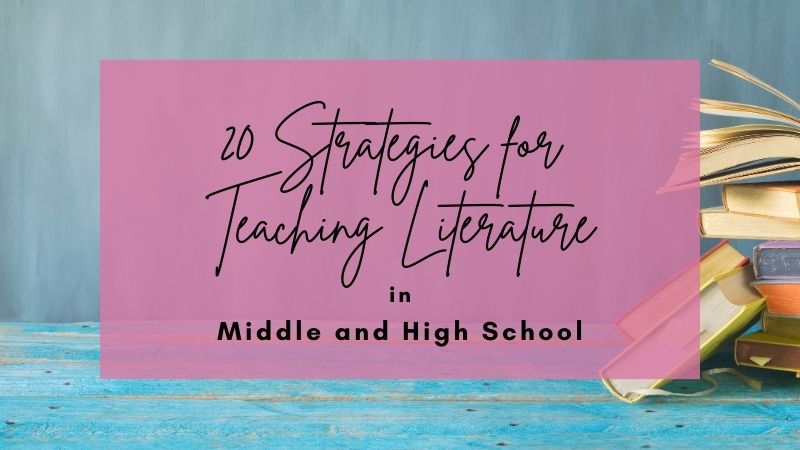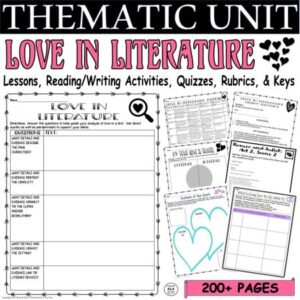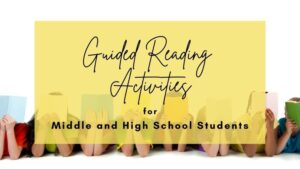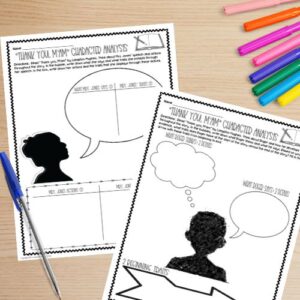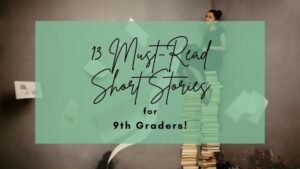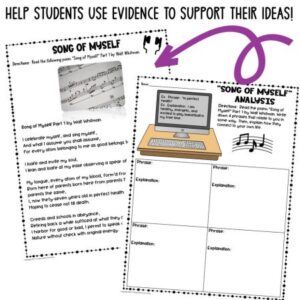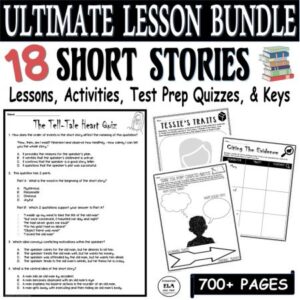What do you remember reading in high school? Maybe it’s Shakespeare’s Romeo and Juliet? Or perhaps it’s “The Tell-Tale Heart” by Poe? I’m guessing that whatever you remember, it was good literature and you enjoyed it because your teacher utilized various strategies for teaching literature. Literature that taught you something about yourself or about life or was just such a well-written story that it’s stuck with you. Literature that had so profound an effect that you still remember it years later.
And whether you remember or not, what likely seared these stories into your memory are the strategies you learned (and still use now) for reading! These are the strategies for teaching literature we want to make sure that our students learn, practice, and develop. We want them to have an experience of literature they will remember years later, so they will continue to read beyond their middle and high school years.
These strategies for teaching literature fall into three specific categories: before reading, during reading, and after reading. Each strategy will enhance students’ understanding and enjoyment of literature.
Read on for 20 strategies for teaching literature and literary analysis that are sure to help your student year after year and story after story.
Need help with Test Prep that includes strategies for teaching literature? Check out this FREE Pack of 3 Test Prep Activities to help students achieve success on standardized tests!
6 Before-Reading Strategies for Teaching Literature:
In order to prepare to read any text, including a work of literature, it’s important to have some context to inform that reading.
- Review the vocabulary or major terms – Create a list of vocabulary before reading that will take some guesswork out of reading for students. This can be done with a preview of sentences or sections and creating either a teacher-selected or student-selected list of vocabulary for review. Reviewing vocabulary before reading is a first strategy for teaching literature that will help students focus on other aspects of the story.
- Glance at the textual features – Looking at titles, subtitles, pictures, structure, and text length can help with reading comprehension. Check out this set of graphic organizers to review the structural elements of any text.
- Give questions to guide reading – To ensure understanding and focus while reading, provide questions that are based on specific skills or standards. Consider how these questions can help with the after-reading tasks that will be required.
- Offer a focus for analysis – Give students a purpose for reading that focuses their analysis on setting, theme, plot, characterization, literary devices, purpose, central idea, etc. However, keep in mind that you cannot teach everything through every text; it’s simply too much to address with one text. Instead, this is an opportunity for differentiation and possible collaboration. To make that process easier, use these literary analysis activities for multiple texts.
- Make connections – Have students focus on their text-to-self, text-to-text, and text-to-world connections. An ideal way to do this is through thematic units; check out this post with examples of how, when, and why to use thematic units.
- Activate Background Knowledge – This is an opportunity to tap into students’ knowledge in ways that can promote cross-curricular learning. A pre-reading KWL (know-want to know-learn) activity is a great option as an early strategy for teaching literature.
8 During-Reading Strategies for Teaching Literature:
Once students begin reading a text, there are several strategies for teaching literature that you can use to support students’ understanding and engagement!
- Use Graphic Organizers with a specific focus – The key is to pick a specific focus that connects to the post-reading activity. This bundle for Langston Hughes’ “Thank you Ma’am” is packed with ideal activities.
- Chunk the text/1-sentence summary – While reading, break the text into smaller parts (chunks) to help with differentiation, then ask students to summarize the chunk. Make it an added challenge by requiring the summary to be a single sentence! Get these graphic organizers to differentiate one-sentence summaries for your students.
- Annotate – This is my favorite! Have students annotate a portion of a text for a specific purpose. An easy way to do this is using symbols or even highlighters or color-coded sticky notes to annotate. Pink could be connections, blue for tone/mood, etc. Remember to keep the focus narrow!
- Think-Aloud – This can be an extension of traditional annotation. First, teachers must model the process of reading a chunk and examining key features. Then, this could be an assignment where students complete a think-aloud in order to evaluate oral communication.
- Visualize based on the text – Another option is to have students create a visual based on the text. This is an excellent opportunity to dive into imagery in a text. Use these digital organizers to examine closely the specific imagery in any text and complete a written response. To make life even easier the activity comes with a step-by-step guide to answering a short response question and writing rubric options!
- Create questions – Questions can be used for reading comprehension or Socratic Seminars. These questions can be supplied by the teacher or make it student-driven with them creating questions and providing answers too!
- Think-Pair-Share – This strategy is best with a focus on a specific concept where students can consider their own thinking before sharing with a partner and the whole class. Keep in mind that this activity could be done silently or out loud. Doing it silently using chart paper and some color-coded markers (each student has a different color) could encourage the quieter students in the class to engage.
- Offer leveled stories – One of the final strategies for teaching literature that can help with differentiation is to use different leveled stories for different students. This will help to build understanding and confidence as students move to higher-level texts.
Want a list of 13 Must-Read Short Stories for High School Students? Click below to read!
6 After-Reading Strategies for Teaching Literature:
When your students have finished reading here, are six ideas for them to showcase their understanding of the text and its big ideas.
- Answer Comprehension Questions – This might seem basic, but many students struggle with comprehension, so getting this practice is helpful before tackling larger tasks. Focus on responses using 2-3 sentences or in a quiz format, like in this option for “The Tell-Tale Heart” by Poe.
- Draw the Setting, Character, Conflict, Plot – The goal of this task is to ensure students work with textual evidence. Grab this graphic organizer pack for setting that helps students examine how the author uses textual evidence to create a setting for a specific purpose.
- Summarize the text – This is another opportunity to have students use evidence from the text. Students can focus on the big ideas and use textual evidence as details for support. Read all about teaching and writing summaries at this post—> Summarizing Made Easy
- Participate in a Socratic Seminar – Use student questions to direct the seminar in small groups or even the whole class. And use this set of peer feedback handouts to help students evaluate each other.
- Use organizers/annotations for longer writing tasks – Get students to write paragraphs or an essay using a graphic organizer. This is particularly helpful to scaffold literary analysis for students in different grades or with different skill levels. It might be that students write an introduction and body paragraph or even an introduction with a couple (or more) of body paragraphs. To help with this process, use these Literary Analysis Essay Outline Activities focused on “The Tell-Tale Heart” by Poe.
- Respond to the text – Students can create an image/artwork to represent the text. Canva for Educators is a great option for this! Responses could be done audibly through the recitation of a poem, like in this “Song of Myself” analysis and poetry-writing activity that could be connected to any text. Other options include the creation of a song, a short paragraph reflection, an article, an extension of the narrative/text, etc.
Click below to get some fun activities for “Song of Myself” that use effective strategies for teaching literature!
Why is practicing these strategies for teaching literature important?
The best part of these 20 strategies for teaching literature is that they continue to be relevant, particularly the higher level the text becomes. With repeated practice, students will gain comfort in each step and this will likely shift their reading habits so they continue to read, enjoy, and learn from good literature as lifelong readers!
Need more fun lessons and activities that incorporate Strategies for Teaching Literature? Check out my store Kristin Menke-Integrated ELA Test Prep!

